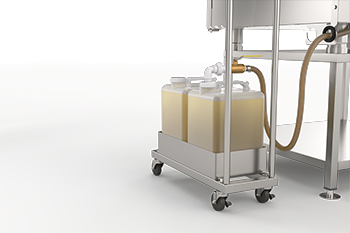Alto-Shaam
Reduce Labor Costs with Grease Collection
Grease isn't just an inconvenience; it's a significant threat to the functionality and safety of commercial kitchens. When not managed properly, grease can wreak havoc, causing extensive damage to appliances, clogging water lines, and ruining kitchen tools.

Grease is more than just a nuisance in the kitchen. Any commercial kitchen knows that grease can cause major damage to just about everything and anything. Without proper collection and disposal, appliances, water lines and kitchen tools can become damaged quickly. Not to mention, removing grease by hand can be a safety hazard for you and your staff.
Thankfully, grease collection equipment is available to get ahead of this inevitable problem to save your business time and labor costs down the line. In some states, these collection traps are required by law to ensure municipal water lines continue to run smoothly. If this is not the case for your restaurant, we will help you better understand why and how to get commercial grease traps in your kitchen.
What is a grease trap?
Grease is a kitchen’s worst nightmare. When grease is not disposed of correctly, it can cause blockages in the sewer line which can result in a myriad of problems for your kitchen. Sinks won’t drain, overflows can cause property damage, and appliances can lose their efficiency.
A grease trap is something that a kitchen can use to prevent grease from entering water lines entirely. This receptacle intercepts grease and collects it separately.
Because grease is 10 to 15 percent less dense than water, they do not mix. A grease trap can then intercept quantities of grease. This trap uses a baffle or plastic wall inside a tank where water is filtered through before going down into the waterline. The baffle slows down water drainage to intercept the grease and filters it away from the drain.
How can I save labor costs with a commercial grease trap?
Let’s say your business opted not to have a grease trap. In this case, grease is drained with water and then passed into the sewer line. As the grease cools, it solidifies. After a few weeks, this buildup can completely block anything from draining. This can stop operation for repairs, causing your business to fork over labor costs and potentially lose days of business depending on the extent of buildup. With a grease trap installed, you can avoid these costs and headaches entirely.
To learn more about Rotisseries, grease collection systems and more visit our product page.
